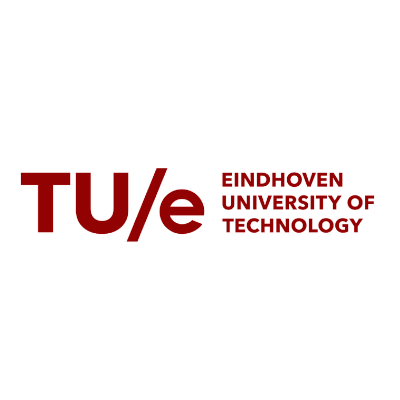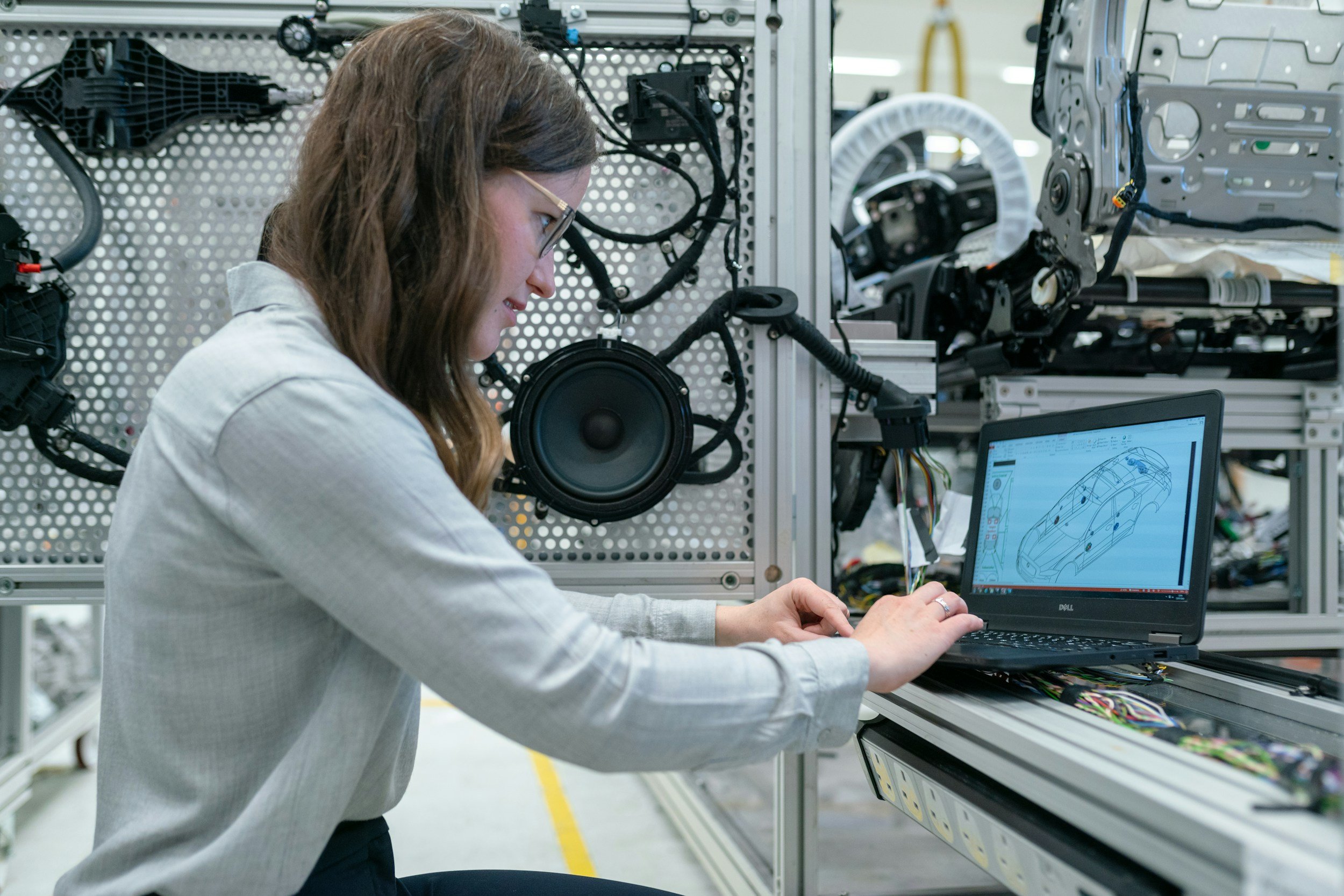
Testimonials
Are you curious as to how our R&D tools perform? Check out these reviews from our customers
-

Dr. Yajun Gao, LONGi, Xi'an, P.R.China
At LONGi, we’re focused on pushing the limits of photovoltaic efficiency through advanced tandem architectures. As our work on silicon–perovskite tandem solar cells has gained global attention, and reliable simulation tools is able to accelerate our R&D.
We use Setfos by Fluxim to simulate the optical behaviour of multilayer devices—especially the top perovskite subcell. Setfos allows us to accurately model light management, parasitic absorption, and reflection losses across complex interfaces. With its intuitive interface and high flexibility, Setfos helps us extract meaningful insights early in the design process, saving time and reducing experimental workload.
Setfos also plays a key role in understanding the specific function of each function layer, helping us fine-tune layer thicknesses and refractive indices to optimize overall stack performance. Precise optical modelling is critical in our development, especially when optimizing spectral coupling between top and bottom cells.
The combination of powerful modeling capabilities and excellent support from Fluxim’s team has made Setfos a valuable tool in our workflow. It helps us move faster from concept to record-breaking devices.
-

Dr. Kumar Sudhir, Nanomaterials Engineering Research Group, Institute for Chemical and Bioengineering, ETH Zürich
“Phelos angle-dependent photoluminescence (PL)/electroluminescence (EL) spectrometer along with Setfos package is a great combination of hardware and software to characterize the orientation of emission transition dipole moment. User-friendly interface and a broad range of parameters, such as polarization angles, position angles, driving current, and J-V parameters to investigate the PL as well as EL characteristics of light-emitting semiconductors. We have extensively used both Phelos and Setfos to understand the quantum emission characteristics of perovskites and organometallic complexes and light-extraction efficiency in PeLEDs and OLEDs. We found these tools allowed fast data acquisition, simulation, and in-depth understanding of emission characteristics of LEDs and OLEDs”
-

Nick Rolston Assistant Professor | School of Electrical, Computer & Energy Engineering Graduate Faculty | Materials Science & Engineering | Chemical Engineering Arizona State University
“We have been using PAIOS for more than 3 years and benefitted tremendously from the extensive range of capabilities provided by the tool. The ability to truly have an all-in-one semiconductor analysis platform allows for all the desired measurements of a photovoltaic device (I-V, transient response, impedance, and temperature-induced activation energies are a few examples) in an automated fashion. We have also leveraged the usage of SETFOS to better understand the underlying physics of the phenomena we are measuring, and I would like to specifically call out the excellent technical support provided by Fluxim. They help us not just with troubleshooting but also with analysis and interpretation of our results!”
-

Dr Lethy Krishnan Jagadamma, Leader of the Energy Harvesting Research Group, University of St Andrews, UK
“In our Energy Harvesting Research Group, we have started using both PAIOS and SETFOS for the characterization of perovskite solar cells very recently. We find both tools very helpful in understanding the device physics of perovskite solar cells and different kinds of charge carrier losses through recombination. The multitude of characterization facilities such as light intensity-dependent J-V, Capacitance-Voltage measurement, transient photovoltaic and transient photocurrent, impedance measurement and charge transport characterization such as SCLC and CELIV all integrated into one set-up is so versatile to give an overview of different loss mechanisms and strength of one device structure over the other. Our research is particularly focussing on indoor photovoltaic development where the carrier management is stringent due to the low intensity and low carrier concentration. We have found PAIOS an excellent supportive tool to enhance our research.”
-

Dr. Jonathon Schrecengost, OLEDWorks
Setfos is both powerful and intuitive, making it an incredible asset for optimizing our OLEDs. The team at Fluxim is excellent in providing support for their users. With Setfos’s accurate modeling capabilities, we have been able to reduce our number of experiments by an order of magnitude, saving tremendously on both the time and costs to commercialization.
-

Dr. Sonia R. Raga Senior Researcher CSIC Científico Titular Nanostructured Materials for Photovoltaic Energy
"We have been using Litos lite for several years now, almost continuously, with reliable results. Any issue found has been immediately addressed by the awesome technical support from Fluxim. Recently, we have taken Litos Lite capabilities to new boundaries by combining the MPP tracking with impedance spectroscopy measurements in PAIOS. This involved the manipulation of the stage during MPP experiment. The results were exceptional, it is possible to track not only the device output power but also many other physical properties extracted from EIS along the degradation curve, expanding the understanding on cell stability"
-

Dr Sandheep Ravi Shankar, Forschungszentrum Jülich GmbH
“ I highly recommend SETFOS, which I mostly use for simulating and understanding both time (TPV, TPC) and frequency domain (IMVS, IMPS and IS) measurements on perovskite solar cells. The user interface is easy to use and manipulate in combination with the scripting and sweep features, allowing to set up and simulate complex experiments easily. The engineers and scientists at Fluxim also provide excellent support and have been very helpful with any questions and clarifications asked of them.”
-

Mostafa Othman, PhD Student, Laboratory of Photovoltaics and Electronic Thin Films, EPFL
“The Fluxim Litos platform played a crucial role in acquiring high-quality stability data. The ability to test under controlled illumination and temperature while continuously tracking MPP provided reliable insights into long-term device performance. The option to have independently operatable measurement chambers allowed us to obtain stability data for multiple test conditions in parallel, which is a big advantage of Litos.”
-

Prof. Dr. Mojtaba Abdi Jalebi, University College London
“We have Fluxim's Paios equipment installed in our lab, and it has been extremely useful across many of our research projects. Paios has provided us with valuable insights into charge carrier mechanisms within perovskite solar cells and LEDs. Its advanced capabilities have helped us better understand how these devices function and how to optimize their performance. It’s a powerful and reliable tool that plays a central role in our characterization workflows”
-

Dr. Justin Chen, Reinhold Dauskardt Group, Stanford University
“Recently, we received a Litos Lite with 56 channels. I am so glad that the instrument integrates an LED-based sun simulator. This is far more convenient than replacing Xenon bulbs all the time. The custom-made sample holders work for our 3 different sample layouts, and with the parallel JV characterization and MPPT, we are saving a lot of time. I also appreciate the good support received by the Fluxim team.”
-

Prof. Hyunkoo Lee, Sookmyung Women's University, Korea
“Setfos is an excellent product for researchers who want to simulate the performance of organic light-emitting diodes without having to design and build custom simulation software. By licensing Setfos, we were able to predict various outcomes without conducting actual experiments and, based on these predictions, publish research results.”
-

Shichen Yin, Organic Electronic Materials and Devices Laboratory (OEMDLab), NC State University
“I have used the Setfos to aid OLED optical design for over three years. Overall, the experience is good since it is easy to use and in good agreement with experimental results.”
-

Prof. Juan-Pablo Correa-Baena, Leader of the Energy Materials Lab, Materials Science and Engineering at Georgia Tech, USA
“LITOS LITE is highly recommended! We have one in our labs and we are saving hours of work by measuring many samples at one time. No time to build our setup up so this was a great purchase!
-

Prof. Shun-Wei Liu, Department of Electronic Engineering & Organic Electronic Research Center, Ming Chi University of Technology, Taiwan
“Setfos is a very powerful simulation tool developed by Fluxim predominantly in the field of OLED and OPV researches. We are heavily dependent on this simulation tool regarding our research activities in OLED and OPV as evident in our publications. Setfos not only helps us in optimizing the device structures prior to device fabrication experimentally but also assists in analyzing the device physics through the simulation on the contribution of the various optical modes in the device as well as estimating the important parameters such as color co-ordinates, angular dependence, reflection and transmission co-efficient etc. Undoubtedly, Setfos takes an important role in the progress OLED and OPV researches.”
-

Dr. Ian Parker, Materials Development Manager DuPont Displays, Santa Barbara, USA
“The software Setfos is an outstanding program for assisting in the development of OLED displays. It provides the predictive capabilities, and physical insight into the optical performance that is needed to optimise your design. It's a fast and powerful package that a user will immediately benefit from. “
-

Suraj Prasad, Engineering and Physics Group, Karlstads University
“I recently started using Paios. I have done some measurements for eg Photo CELIV, Charge extraction etc. Indeed, I need to work on analysis part. Results are promising. Hope soon we will publish some results. I am happy with PAIOS instrument. 😊.”
-

Prof. Giulia Grancini Director of ERC HYNANO project and pvsquared2 team and University of Pavia, Italy
“5 star recommendation for LITOS LITE and FLUXIM support. A great choice for my lab, for setting up a nicely working system for monitoring stability under different conditions of our perovskite solar cells! Great communication with FLUXIM for installation, training and support! Highly recommended! “
-

Dr. Gregory Burwell, Department of physics, Swansea University
“Laoss helps us to better understand systems before we commit time and resources to make them in the lab.”
-

Ruichen Yi, Fudan University
“The latest version of SETFOS is really nice with all the new features, especially the addition of IMVS, so thanks for that”
-

Dr Ardalan Armin, Ser-SAM group, Department of physics, Swansea University
“We have extensively used both SETOS and LAOSS in our recent endeavor to model large-area OPV and OLED devices. The intuitive workflow of both software packages allows us to quickly try out new ideas before realising them experimentally.“
-

Dr. Ding, OLED simulation team, Ningbo Research Institute, China
“Our team purchased the optical and electrical modules of Setfos. The operation interface of the software is intuitive, friendly, and easy to operate. The software itself contains rich information within a large material database. In the OLED device simulation process, we can simulate the emission spectrum of OLED, and simultaneously the recombination zone of charge transfer and drift spread. It can also help us to modify the design of device structure and can effectively analyze and improve the OLED device efficiency. The results calculated by Setfos could be served as a good reference point for our scientific research. We would highly recommend you consider Setfos as the option. “
-

Dr Gregory J. Wilson, Research Group Leader, CSIRO Energy, Newcastle, Australia
“Paios and Setfos have been an asset to our research capability in CSIRO Energy and a key tool in our research and assessment of next generation thin-film photovoltaics, in particular, organic and perovskite solar cells. One of the key points of differentiation – and a clear attraction – has been the flexibility of the system and the ease in which user-defined experiments can be created. Our Team has appreciated the interaction with Fluxim and realised this has been much more than a transactional experience – we’ve formed a real partnership between developers and researchers.”
-

Dr. Jan Blochwitz-Nimoth CTO Novaled AG, Dresden, Germany
“The setfos software is a fundamental optical simulation tool for the development of highly efficient OLED structures. New features of this software like including several different emission zones are of major importance for developing efficient white light OLED structures containing more than one emitting material. The flexibility, speed, and reliability of this software combined with its huge variety of simulation tools concerning various physical key quantities like angular dependence, color coordinates, or reflection spectra allow further improvement and basic insight of OLEDs.”
-

Dr. Markus Regnat, ZHAW School of Engineering, Switzerland
“As an OLED researcher, I am very thankful for the Fluxim tools we have in our Group at ZHAW. Thanks to Paios and Phelos I can characterize my OLEDs in various regimes, such as transient, frequency, or steady-state and angle-dependent, and this all by just a few clicks. Thanks to the simulation software Setfos I can set up an electro-optical device model to reproduce the experimental data, which helps me to understand better the physics inside the OLED. Knowing the emission zone or the charge carrier distribution of an OLED can give you hints on efficiency or lifetime improvements.”
-

Prof. Dr. Jianxin Tang, Soochow University, Suzhou, China
“As an advanced optical simulation software, Setfos provides great opportunities for researching optical features both in light-emitting diodes (LEDs) and solar cells. The operation of Setfos is quite clear and easy. Moreover, it gives us useful physical insights of light manipulation when we design our optoelectronic devices. Our experimental data and theoretical analysis have been well demonstrated via simply modelling and computing with Setfos. It is truly a recommendable tool for studying LEDs and solar cells.”
-

Tom van der Hofstad, Eindhoven University of Technology, The Netherlands
“The automated measurement platform Paios allows one to perform a series of measurements on organic solar cells within a matter of minutes, which otherwise would have taken days.”
-

Jon Bartelt, Stanford University, Stanford CA, USA
“Setfos is a great product for researchers who want to simulate the performance of organic solar cells without having to design and build custom simulation software. By licensing Setfos, we were able to quickly answer many research questions and publish results in a matter of months.”
-

Prof. Dr. Seung Jae Baik, Korea Advanced Institute of Science and Technology (KAIST), South Korea
“We successfully characterized the transient response of silicon-based solar cells with the Paios measurement system. For instance, we were able to determine the electron mobility and photo-carrier lifetime.”
-

Dr. Rajesh Mehra, Head of Electronics & Communication Engineering Department, National Institute of Technical Teachers' Training & Research
“Setfos is an efficient design and simulation tool for Organic LEDs and Solar Cells. Our post graduate and PhD scholars are using it and found it useful for their research work in related areas. I have no hesitation in recommending it to faculty & students for their research work.”
-

Dr. Stephan Harkema, Senior Researcher, Holst Centre / TNO, Eindhoven, the Netherlands
“At the Holst Centre, in the OLED Lighting program, the Setfos modeling tool has proven its worth by enabling accurate predictions of light emission from OLEDs on glass, plastic and metal substrates. I have experienced firsthand that this sophisticated and user-friendly software package can be used to interpret measurements and extract the relevant parameters efficiently. Such information is essential in order to improve light emission from novel OLED device designs. Fluxim also provides excellent customer support by hosting annual workshops, providing assistance whenever requested and by inquiring what features are considered valuable and essential.”
-

Dr. Janelle Leger University of California Santa Cruz, USA
“I have used Setfos extensively to investigate the emission zone in polymer light-emitting diodes and electrochemical cells. The speed, reliability, and flexibility of this software make it ideal for a wide range of applications, particularly in the optimization of device structures or in the fundamental research of device physics.”
-

Prof. Franky So, OEMD Lab, NC State University
“Setfos is a great simulation software for OLED designs. The user interface is intuitive to use, and the graphical presentation of the simulation results is well done. We find the quantification of optical modes and determination of their dispersion particularly useful. It allows us to optimize the OLED structure with a few clicks, and the results are in good agreement with experimental data. Setfos saved us a tremendous amount of time to model our nanostructured OLEDs. It is truly a powerful tool for our OLED research.”
-

Dr. Gabriel Leonardo Nogueira, Postdoctoral Research Fellow Laboratory of Novel Materials and Devices (LNMD) School of Sciences (FC/Unesp)
“Paios was essential in validating our unified analytical framework for charge transport and hysteresis in perovskite solar cells. In particular, the Sinus-J-V function allowed us to probe the transition from a capacitive to an inductive-like response across frequencies. The versatility of Paios enabled us to combine small- and large-signal characterizations within a single experimental workflow.”
-

Prof. Chihaya Adachi, Director of Center for Organic Photonics and Electronics Reseaerch (OPERA), Kyushu University, Japan
"Setfos developed by Fluxim AG is a very useful software for the use of simulation of the optical and electrical properties of OLEDs. It contributes hugely to OLED and OPV research and it is a widely utilized tools by many researchers. We have used this simulation tool for the determination of recombination zone and outcoupling efficiency, and it helps us optimize our OLEDs with desired emission color, best efficiency and best device stability."
-

Prof. Chris Giebink, Giebink Research Group, University of Michigan
“Setfos was enabling for this work because it greatly sped up our modeling process, letting the student involved focus on exploring the physics of OLED degradation rather than rewriting and debugging drift-diffusion code. In this context, Setfos has really been an accelerator for our research productivity.”
-

Dr. Gaetano Calogero CNR, ISTITUTO PER LA MICROELETTRONICA E MICROSISTEMI, Italy
“Setfos has proved to be a powerful tool for investigating the impact of ion migration on the performance of perovskite x-ray detectors. Its flexibility - enabling the integration of custom x-ray-induced generation profiles and the design of tailored transient voltage and illumination protocols - allowed us to extend its use beyond our usual applications as a solar cell simulator. This versatility enabled us to gain valuable insights into a challenging problem that has rarely been investigated through simulation tools.”
-

Dr. Joan Ràfols Ribé, Senior Staff Scientist, Umeå University
"Fluxim’s Setfos software was indispensable for modeling the dynamic p-i-n junction—the key working mechanism governing the operation of our light-emitting electrochemical cells. Its drift-diffusion framework allowed us to capture the complex interplay of electronic and ionic processes and compare directly with experimental measurements. This led to new insights into the dynamic p-i-n junction re-arrangement and electrochemical doping efficiency under applied voltage. The attentive support from Fluxim ensured that we could fully exploit the tool capabilities to model these complex and mixed ionic-electronic systems."

Innovate with Confidence
Discuss your R&D goals with us and discover the right simulation or measurement tools to help.
QUESTIONS?
Talk to Dr. Daniele Braga
Email: info@fluxim.com
Software & General Enquiries: Tel.: +41 44 500 47 70

